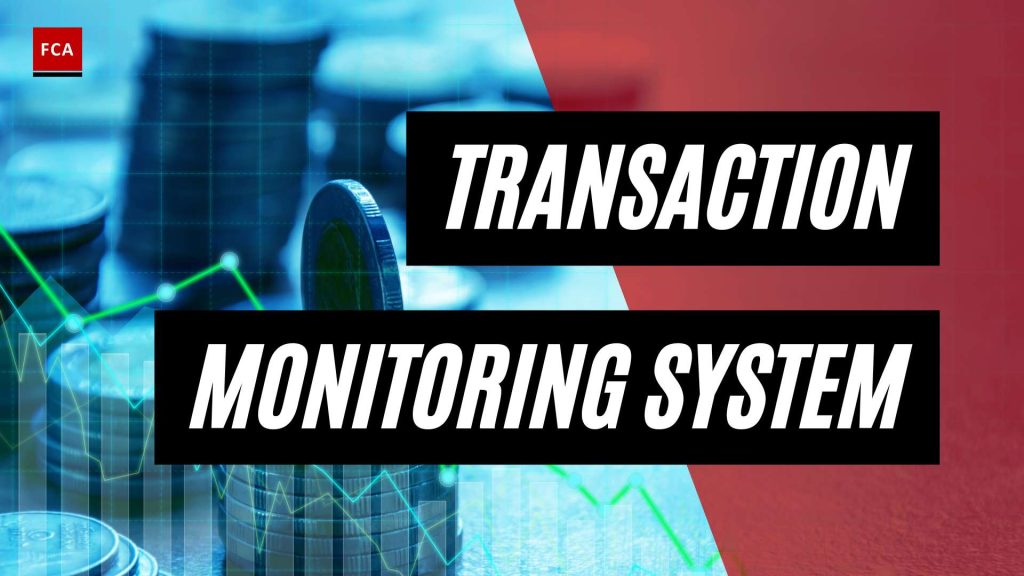Understanding Transaction Monitoring
Transaction monitoring is a fundamental process in the fight against money laundering and other financial crimes. It involves the continuous monitoring of customer transactions, such as transfers, deposits, and withdrawals, to identify any suspicious behavior that may indicate illicit financial activities (Napier). The primary purpose of transaction monitoring is to detect and prevent money laundering, terrorist financing, fraud, and other illicit activities.
Definition and Purpose of Transaction Monitoring
Transaction monitoring refers to the systematic process of analyzing customer transactions to identify patterns, trends, and anomalies that may be indicative of illicit activities. Financial institutions, such as banks and other regulated entities, are required to implement transaction monitoring systems to comply with anti-money laundering (AML) regulations and to protect the integrity of the financial system.
The purpose of transaction monitoring is to:
-
Identify suspicious transactions: By examining transactional data, transaction monitoring systems aim to flag any transactions that deviate from expected patterns or thresholds. These systems utilize a combination of rule-based approaches and advanced technologies, such as artificial intelligence (AI), to detect potentially suspicious behavior (Fraud.com).
-
Provide a complete view of customer activity: Transaction monitoring systems offer financial institutions a comprehensive view of their customers’ transactional behavior, allowing them to understand and analyze their activities. This holistic perspective enables the identification of unusual or abnormal patterns that may require further investigation.
-
Ensure compliance with AML regulations: Financial institutions are required by law to implement transaction monitoring processes to comply with regulations such as the Bank Secrecy Act (BSA) and AML regulations. Transaction monitoring helps institutions fulfill their regulatory obligations by identifying and reporting suspicious transactions to financial intelligence units (Fraud.com).
-
Mitigate financial crime risks: By detecting and preventing financial crimes, such as money laundering, transaction monitoring systems contribute to the overall risk mitigation efforts of financial institutions. They play a crucial role in preserving the integrity of the financial system and protecting institutions from reputational and financial damage.
Importance of Transaction Monitoring in AML Compliance
Transaction monitoring is a critical component of AML compliance for organizations falling under money laundering regulations. It serves as a proactive measure to identify and deter illicit financial activities by continuously monitoring customer transactions. Transaction monitoring systems help identify suspicious behavior, thereby enabling institutions to take appropriate action to prevent money laundering, terrorist financing, and other financial crimes.
By implementing robust transaction monitoring systems, financial institutions can:
-
Detect and report suspicious transactions: Transaction monitoring systems enable the timely detection and reporting of suspicious transactions. By identifying potential red flags and anomalies, these systems facilitate the identification of transactions that may require further investigation. This is essential for fulfilling reporting obligations, including suspicious transaction reporting, and cooperating with law enforcement authorities.
-
Enhance risk management capabilities: Transaction monitoring systems provide valuable insights into customer behavior and transactional patterns. By analyzing this data, institutions can better understand their customers’ risk profiles and identify high-risk individuals or entities, such as politically exposed persons (PEPs) and entities associated with shell companies and money laundering. This knowledge facilitates enhanced risk assessment and enables institutions to implement appropriate risk mitigation measures.
-
Demonstrate regulatory compliance: Implementing transaction monitoring systems is a regulatory requirement for financial institutions. By having robust systems in place, institutions can demonstrate their commitment to compliance with AML regulations. This not only helps avoid penalties and reputational damage but also fosters trust among regulators, customers, and other stakeholders.
With the ever-evolving landscape of financial crime and money laundering schemes, transaction monitoring systems play a crucial role in safeguarding the financial system. By continuously monitoring customer transactions, financial institutions can proactively detect and prevent illicit activities, contributing to the global efforts to combat money laundering and maintain financial integrity.
Transaction Monitoring Systems
To combat money laundering and other illicit activities, financial institutions rely on transaction monitoring systems. These systems play a crucial role in identifying and investigating potentially suspicious transactions. In this section, we will provide an overview of transaction monitoring systems and explore the role of artificial intelligence (AI) in enhancing their effectiveness.
Overview of Transaction Monitoring Systems
Transaction monitoring systems are designed to analyze and monitor financial transactions in real-time, with the goal of identifying unusual or potentially illicit activities. By analyzing large volumes of transactional data, these systems can detect patterns and anomalies that may indicate money laundering or other financial crimes.
Transaction monitoring systems typically incorporate data mining algorithms to analyze vast datasets for suspicious activity. These algorithms, along with anti-money laundering (AML) rules, help financial institutions determine the risk of money laundering associated with specific transactions.
The effectiveness of transaction monitoring systems relies on accurate and high-quality data input. It is vital for financial institutions to ensure that the data they collect is complete, accurate, and up-to-date. This ensures that the system can accurately identify and flag potentially suspicious transactions.
Role of Artificial Intelligence in Transaction Monitoring
In recent years, artificial intelligence (AI) has emerged as a powerful tool in transaction monitoring. AI technology, such as machine learning and natural language processing, enables transaction monitoring systems to continuously learn and adapt to new patterns of suspicious behavior.
AI is particularly valuable in combating financial crime because it can detect anomalous transactions that may go unnoticed by human analysts. It can also identify new patterns of suspicious behavior that evade traditional rule-based approaches in transaction monitoring. This capability is especially important as money launderers constantly evolve their tactics.
By leveraging AI, transaction monitoring systems can analyze vast amounts of data more efficiently and accurately. They can identify complex relationships between entities, detect hidden patterns of transactions, and assess the overall risk associated with specific activities. This advanced analysis enables financial institutions to uncover suspicious activities and promptly report them to the appropriate authorities.
The role of AI in transaction monitoring goes beyond detecting suspicious transactions. It also helps financial institutions streamline their compliance processes by reducing false positives and minimizing the manual effort required for investigation. AI-powered transaction monitoring systems can prioritize alerts based on risk levels, allowing compliance teams to focus their resources on the most critical cases.
In summary, transaction monitoring systems are crucial tools in preventing money laundering and other financial crimes. The incorporation of AI technology enhances the effectiveness of these systems by enabling more accurate detection of suspicious activities and reducing the burden on compliance teams. As financial criminals become more sophisticated, transaction monitoring systems must continue to evolve and leverage AI to stay ahead of illicit activities (Tookitaki).
Challenges in Transaction Monitoring
Implementing effective transaction monitoring systems is crucial for combatting money laundering and ensuring compliance with Anti-Money Laundering (AML) regulations. However, there are several challenges that organizations face when it comes to transaction monitoring. This section will explore three key challenges: false positives in transaction monitoring, cost and resource challenges, and outdated rule-based systems.
False Positives in Transaction Monitoring
One of the significant challenges in transaction monitoring is the generation of false positives, alerts that are mistakenly identified as suspicious activity. False positives can occur due to various reasons, such as complex transaction patterns, incomplete data, or limitations in the monitoring system’s algorithms.
The high volume of false positives poses a significant burden on financial institutions, requiring extensive resources and time to investigate and determine the legitimacy of each alert. This not only increases operational costs but also leads to alert fatigue and potential delays in identifying genuine suspicious transactions. Financial institutions strive to improve their monitoring systems by employing advanced technologies like artificial intelligence and machine learning to reduce false positives and enhance the accuracy of alerts.
Cost and Resource Challenges
Transaction monitoring is a resource-intensive process that demands significant investments from financial institutions. Traditional transaction monitoring systems often generate a large number of false positives, resulting in high costs for alert processing and regulatory issues. For instance, financial institutions like Deutsche Bank and Wells Fargo have spent billions of dollars to enhance their AML systems, demonstrating the financial impact of transaction monitoring challenges.
The costs associated with transaction monitoring include not only the initial investment in technology but also ongoing maintenance, training of personnel, and keeping up with regulatory changes. Organizations must allocate sufficient resources to effectively manage transaction monitoring systems and ensure compliance with regulatory requirements.
Outdated Rule-Based Systems
Many financial institutions still rely on outdated rule-based transaction monitoring systems that follow pre-defined rules and thresholds to identify suspicious activities. However, these systems have limitations in detecting evolving and sophisticated money laundering techniques, as they are vulnerable to manipulation by criminals operating within set thresholds.
To address this challenge, organizations are turning to advanced technologies such as artificial intelligence and machine learning. These technologies enable transaction monitoring systems to adapt and learn from new patterns and anomalies, enhancing their ability to detect suspicious activities more accurately and efficiently.
By recognizing and proactively addressing these challenges, financial institutions can strengthen their transaction monitoring capabilities and better protect themselves against money laundering risks. Implementing advanced technologies, refining alert management processes, and allocating appropriate resources are key steps in overcoming these challenges and ensuring the effectiveness of transaction monitoring systems.
Best Practices for Effective Transaction Monitoring
To ensure the effectiveness of transaction monitoring systems in detecting and preventing money laundering, several best practices should be followed. These practices include adopting a risk-based approach, incorporating advanced data mining algorithms, and implementing continuous monitoring and adaptability.
Risk-Based Approach in Transaction Monitoring
A risk-based approach is crucial in transaction monitoring to focus resources on higher-risk areas and customers. Financial institutions are advised to align the extent and depth of transaction monitoring with institutional risk assessment and individual customer profiles (Napier). By considering factors such as customer type, transaction amount, and geographic location, institutions can tailor their monitoring efforts to prioritize suspicious activities that pose a higher risk of money laundering.
Implementing a risk-based approach allows institutions to allocate resources more efficiently, reducing the number of false positives and optimizing the effectiveness of their transaction monitoring systems.
Incorporating Advanced Data Mining Algorithms
To combat evolving and sophisticated money laundering techniques, transaction monitoring systems should incorporate advanced data mining algorithms. These algorithms analyze large data sets for patterns and anomalies associated with money laundering risks (Napier). By leveraging artificial intelligence, these systems can detect suspicious activities that may go unnoticed by human analysts.
Advanced data mining algorithms help financial institutions stay ahead of emerging money laundering trends and identify unknown patterns of suspicious behavior. This is particularly crucial as criminals continuously adapt their tactics to evade detection. By constantly improving the algorithms used in transaction monitoring systems, institutions can enhance their ability to detect and prevent money laundering activities.
Continuous Monitoring and Adaptability
Transaction monitoring is an ongoing process that requires continuous monitoring and adaptability. Financial institutions need to regularly review and update their monitoring systems to keep pace with technological advancements and regulatory changes (Tookitaki).
By embracing technological advancements, such as artificial intelligence and machine learning, institutions can enhance their transaction monitoring capabilities. These technologies enable real-time monitoring, allowing for immediate detection and response to suspicious activities.
Financial institutions should also establish processes for regular review and optimization of their monitoring systems. This includes evaluating the performance of the system, analyzing false positives, and making necessary adjustments to improve accuracy and efficiency.
By continuously monitoring and adapting their transaction monitoring systems, financial institutions can better protect their integrity and ensure compliance with anti-money laundering regulations.
Incorporating these best practices into transaction monitoring systems strengthens the ability of financial institutions to detect and prevent money laundering activities. A risk-based approach, advanced data mining algorithms, and continuous monitoring and adaptability are key components for effective transaction monitoring in the fight against financial crime.
Transaction Monitoring and Fraud Prevention
Transaction monitoring systems are a vital tool in the fight against fraudulent activities, allowing organizations to identify and prevent potential fraud before it causes significant harm. These systems utilize advanced technologies, such as machine learning algorithms and real-time analysis, to detect suspicious behavior and patterns in transactions. Let’s explore the role of transaction monitoring in fraud detection, the importance of automated transaction monitoring solutions, and the compliance aspect with anti-money laundering (AML) regulations.
Transaction Monitoring for Fraud Detection
Transaction monitoring systems are designed to analyze financial data, including deposits, withdrawals, and transaction velocity, in order to identify trends and discrepancies that may indicate fraudulent activity. By scanning and analyzing large volumes of data, these systems can detect potential red flags and alert financial institutions to take appropriate action.
The detection of suspicious transactions is crucial for preventing fraud-related losses, which reached a staggering $8.8 billion in 2022 (Sumsub). Timely identification of fraudulent behavior through transaction monitoring systems allows organizations to mitigate risk and protect their financial integrity.
Role of Automated Transaction Monitoring Solutions
Implementing automated transaction monitoring solutions provides organizations with the ability to efficiently monitor financial operations and detect fraud. These solutions leverage sophisticated algorithms and data analysis techniques to identify unusual patterns and behaviors in transactions. By analyzing user behavior, transaction details, and other relevant signals, automated transaction monitoring solutions can quickly and accurately flag potentially fraudulent activities.
The use of automation in transaction monitoring significantly improves efficiency and reduces the risk of human error. It enables organizations to monitor a large volume of transactions in real-time, allowing for swift detection and response to potential fraud attempts. This proactive approach helps in preventing fraudulent activities and minimizing financial losses for businesses.
Compliance with AML Regulations
Transaction monitoring is not only a best practice but also a legal requirement for financial institutions and businesses subject to AML regulations. AML regulations aim to prevent money laundering and the financing of illicit activities by establishing strict compliance standards. Transaction monitoring plays a crucial role in meeting these compliance requirements.
Financial institutions and regulated businesses must implement transaction monitoring systems to identify suspicious transactions and report them to the appropriate authorities, such as financial intelligence units. By continuously monitoring transactions and detecting potential money laundering activities, organizations can fulfill their obligations under AML regulations and contribute to the overall integrity of the financial system.
In conclusion, transaction monitoring systems are indispensable in the realm of fraud prevention. These systems enable organizations to detect and prevent fraudulent activities by analyzing transactional data and identifying suspicious behavior. Automated transaction monitoring solutions enhance efficiency and accuracy, while compliance with AML regulations ensures adherence to legal requirements. By leveraging transaction monitoring systems, organizations can safeguard their financial integrity and protect themselves against the ever-evolving landscape of financial fraud.
Optimizing Transaction Monitoring Systems
To ensure the effectiveness of transaction monitoring systems in combatting money laundering and other financial crimes, it is essential to optimize various aspects of these systems. This section will explore three key elements for optimizing transaction monitoring systems: high-quality data input, machine learning and advanced algorithms, and expertise in interpretation and investigation.
Importance of High-Quality Data Input
The accuracy and reliability of transaction monitoring systems heavily rely on the quality of data input. It is crucial to ensure that the data being fed into the system is complete, accurate, and up-to-date. High-quality data allows the system to generate more accurate alerts and reduce false positives, improving the overall efficiency of the monitoring process.
To achieve high-quality data input, financial institutions and organizations need to establish robust data collection and management processes. This involves implementing effective customer identification programs and maintaining accurate customer records. Additionally, integration with external data sources, such as financial intelligence units, can provide valuable information for enhanced monitoring and analysis.
Machine Learning and Advanced Algorithms
Machine learning and advanced algorithms play a vital role in optimizing transaction monitoring systems. By leveraging these technologies, the systems can process large volumes of transactions efficiently, reducing the burden of manual review and enabling institutions to sift through vast amounts of data quickly.
Machine learning algorithms can analyze historical data to identify patterns and trends associated with fraudulent activities. These algorithms can then apply this knowledge to real-time transaction monitoring, automatically detecting deviations from normal behavior and generating alerts for further investigation.
Advanced algorithms, such as anomaly detection algorithms and network analysis algorithms, enhance the capabilities of transaction monitoring systems. Anomaly detection algorithms help identify transactions that deviate significantly from expected patterns, while network analysis algorithms uncover complex relationships and connections between entities, aiding in the detection of suspicious activities.
Expertise in Interpretation and Investigation
While transaction monitoring systems provide valuable automated analysis, the expertise of human analysts is crucial for effective interpretation and investigation of alerts. Skilled analysts can evaluate alerts generated by the system, conduct in-depth investigations, and determine the legitimacy of flagged transactions.
Expertise in interpretation and investigation allows analysts to understand the context of transactions, consider additional factors, and make informed decisions regarding potential suspicious activity. This expertise is particularly important in reducing false positives and ensuring that legitimate transactions are not unnecessarily flagged.
To enhance expertise in interpretation and investigation, organizations should invest in training programs for their analysts. These programs should cover topics such as understanding money laundering typologies, recognizing common red flags, and staying up-to-date with evolving trends in financial crimes.
By optimizing transaction monitoring systems through high-quality data input, machine learning, and advanced algorithms, and expertise in interpretation and investigation, financial institutions can strengthen their ability to detect and prevent money laundering and other financial crimes effectively. These optimizations contribute to a more robust prevention of money laundering framework, safeguarding the integrity of the financial system.
Creating a Comprehensive Profile for Effective Transaction Monitoring
To effectively combat money laundering and detect suspicious activities, transaction monitoring systems play a crucial role in continuously monitoring transactions and customer behavior. By analyzing transactions in real-time and utilizing machine learning algorithms and rules, these systems can identify and prevent fraudulent activities. Let’s explore the key components of creating a comprehensive profile for effective transaction monitoring.
Continuous Monitoring of Transactions and Customer Behavior
One of the primary objectives of transaction monitoring systems is to continuously monitor transactions and customer behavior. By doing so, these systems can establish a baseline of normal activity for each client, allowing them to identify deviations or anomalies that may indicate suspicious or fraudulent transactions. This continuous monitoring enables financial institutions to stay vigilant and promptly flag any irregularities in customer activity (Fraud.com).
Identifying Anomalies and Suspicious Transactions
Transaction monitoring systems utilize predictive mechanisms and machine learning algorithms to detect and prevent financial crimes by analyzing past transactions and customer data. By uncovering “red flags” and patterns in customer behavior, these systems can identify anomalies and potentially suspicious transactions. This helps financial institutions take proactive measures to investigate and report any potential money laundering activities to the appropriate authorities.
It is important to note that transaction monitoring systems are not foolproof and may generate false positives. However, with the incorporation of advanced data mining algorithms and continuous fine-tuning, these systems can minimize false positives while maximizing the detection of genuine suspicious activities. This ensures that financial institutions focus their resources on investigating legitimate cases and comply with regulatory requirements (Salv).
Enhancing AML Compliance with Transaction Monitoring
Transaction monitoring systems play a vital role in enhancing Anti-Money Laundering (AML) compliance for regulated organizations, including banks, financial institutions, money services businesses (MSBs), payment service providers (PSPs), virtual asset service providers (VASPs), and digital banks. These systems provide a complete view of customers’ activity, helping organizations meet their regulatory obligations and minimize the risk of facilitating money laundering or terrorist financing activities (Salv).
By continuously monitoring transactions and customer behavior, transaction monitoring systems contribute to the prevention of money laundering schemes. They aid in the identification of suspicious patterns, unusual transactions, and potential connections to high-risk entities such as politically exposed persons (PEPs) and shell companies. The data collected through transaction monitoring systems also assists in fulfilling reporting requirements, such as suspicious transaction reporting, and supports the overall effectiveness of AML policies and procedures (Salv).
In conclusion, creating a comprehensive profile for effective transaction monitoring involves continuous monitoring of transactions and customer behavior, identification of anomalies and suspicious transactions, and enhanced AML compliance. With the aid of transaction monitoring systems, financial institutions can better detect and prevent money laundering activities, ultimately safeguarding financial integrity and maintaining compliance with regulatory obligations.








